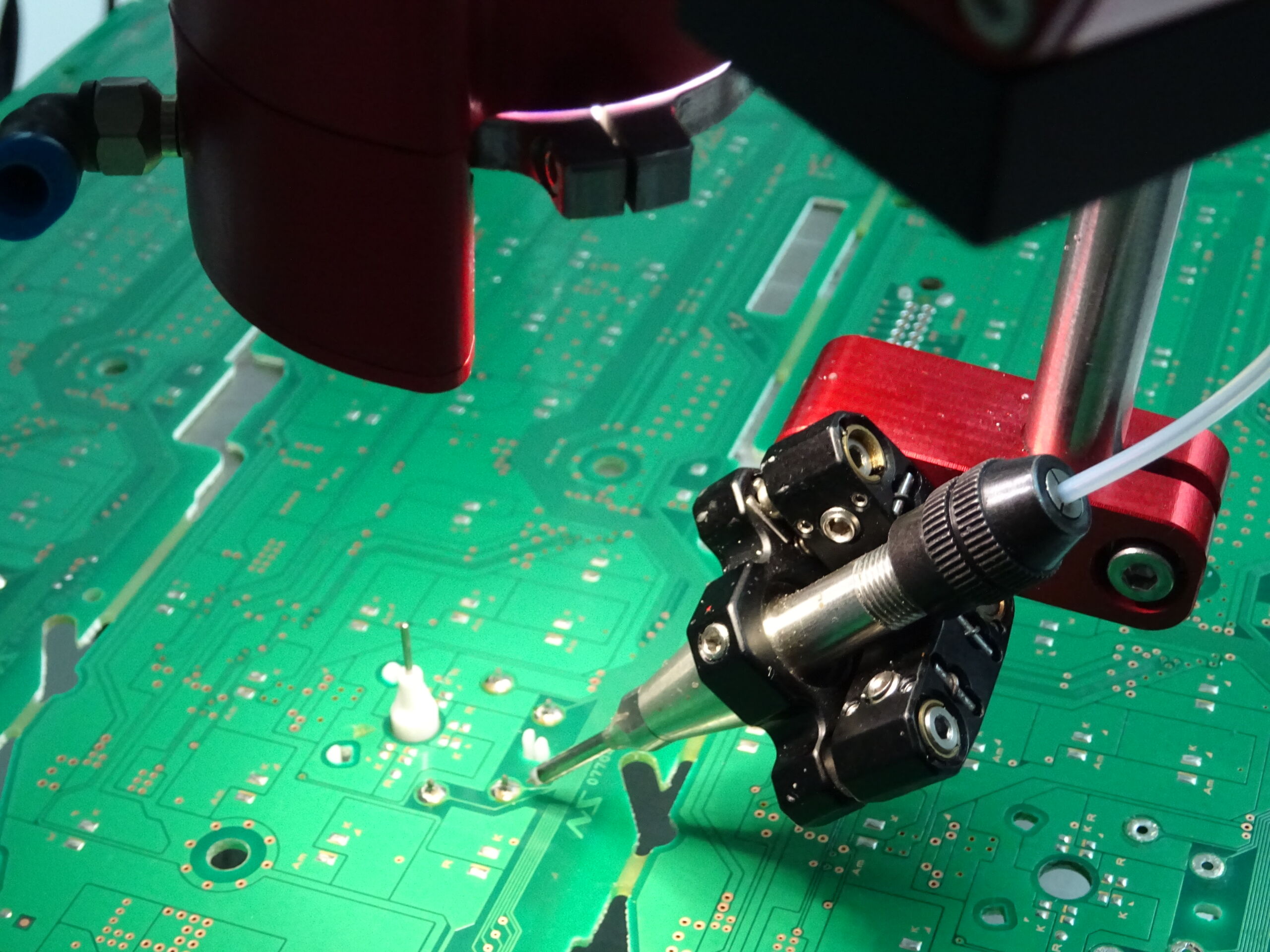In today’s rapidly evolving manufacturing industry, “precision” and “efficiency” have emerged as the cornerstone concepts of industrial production. Laser soldering technology, with its unique advantage of utilizing “light as a blade,” is quietly transforming traditional welding processes and establishing itself as an “invisible champion” in the high-end manufacturing sector. From the smartphones in your hands to the cutting-edge new energy vehicles, and from precision medical devices to aerospace components, the influence of laser soldering is ubiquitous. Today, let us unveil the mystery behind this “black technology” and explore how a beam of light is reshaping the world!
1. The of Laser Soldering: Why Is It Favored by High-End Manufacturing?
- Compared to traditional soldering methods, such as soldering with a soldering iron and wave soldering, laser soldering technology offers three significant advantages:
- The diameter of the laser beam can be finely adjusted to the micrometer level, allowing for the precise handling of solder pads as small as 0.1 mm and enabling the flawless soldering of components as thin as a human hair.
- “Just the right amount” of thermal impact: Localized instant heating prevents high temperatures that could harm sensitive components, resulting in yield rates that improve by over 30%.
“Contactless” cleaning process: Non-contact soldering eliminates mechanical stress and residue, making it particularly suitable for applications with stringent cleanliness requirements.
In summary, laser soldering is tailored to meet the demands of high precision, high reliability, and miniaturization.

DYNALAS Laser Soldering System
2. Six Core Application Scenarios for Laser Soldering
① Consumer Electronics: The “Invisible Guardian” of Miniature Components
Mobile phone camera modules, TWS earphone chips, and smart watch sensors require the soldering of miniaturized electronic components to be “fast, precise, and stable.” Laser soldering technology can accurately identify solder points, preventing PCB deformation and component damage, thereby ensuring optimal performance in line with the trend of product miniaturization.
② New Energy Vehicles: The “Safety Code” for Power Batteries
The welding of battery tabs, Battery Management System (BMS) control boards, and onboard sensors necessitates exceptionally high welding strength and consistency. Laser soldering can produce splash-free and void-free connections, significantly enhancing the safety and longevity of battery packs. This technology has become a “secret weapon” for automotive manufacturers such as Tesla and BYD.
③ Optical Communication: The High-Speed Connector of the 5G Era
The soldering of optical modules and fiber optic devices necessitates ultra-low thermal damage and ultra-high precision. Laser soldering is ideally suited for specialized materials, such as ceramic substrates and glass packaging, ensuring “zero errors” in 5G signal transmission.
④ Medical Equipment: The “Precision Scalpel” for Life and Health
The microcircuits in endoscope probes and the sealing of pacemakers must be 100% reliable. The pollution-free characteristics of laser soldering establish it as the “gold standard” in the manufacturing of medical electronics.
⑤ Semiconductor Packaging: The Final Nanometer of Chip Packaging
Wire bonding for IGBT modules and sensor chips frequently results in gold wire breakage due to conventional processes. The non-contact energy output of laser soldering can accurately create micron-level solder joints, thereby enhancing chip performance.
⑥ Aerospace: The Ultimate Test in Extreme Environments
Welding of satellite circuit boards and aircraft engine sensors must endure extremely high temperatures, strong vibrations, and vacuum conditions. The high-strength welds and fatigue resistance achieved through laser soldering offer a robust assurance for “zero-defect” manufacturing in spacecraft.
3. The Future is Here: Intelligent Upgrading of Laser Soldering
With the integration of technologies such as AI visual positioning, real-time temperature feedback, and digital twin control, laser soldering is progressing towards “fully automated intelligence.
- AI Quality Inspection System: Automatically identifies defects in solder joints, ensuring that no defective products are overlooked.
- Adaptive Parameter Adjustment: Dynamically optimizes energy output by considering material thickness and environmental temperature.
- Industrial Internet Integration: Provides complete traceability of welding data, facilitating the advancement of intelligent manufacturing.
Conclusion: A Beacon of Hope Illuminating the Future of Intelligent Manufacturing
From “manufacturing” to “intelligent manufacturing,” laser soldering technology is redefining the boundaries of precision welding. Whether addressing the extreme thinness of consumer electronics, the robust performance of new energy vehicles, or the precision and reliability required in medical applications, this “light” is quietly crafting a narrative of industrial innovation.
 DYNALAS
DYNALAS